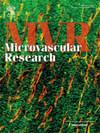Activated partial thromboplastin time levels and coronary artery lesions in Kawasaki disease: A retrospective cohort study
IF 2.7
4区 医学
Q2 PERIPHERAL VASCULAR DISEASE
引用次数: 0
Abstract
Objective
Kawasaki disease (KD) is an acute systemic inflammation, that affects medium-sized arteries. Coronary artery lesions (CALs) were the most serious complication or sequelae of KD. The intense inflammatory response leads to platelet activation, further exacerbating inflammation, which plays an important role in the pathogenesis of CALs in KD patients. Plus, coagulation factors are closely related to platelet activation. Therefore, we speculate that the activated partial thromboplastin time (APTT), an indicator of coagulation factor function, may be involved in the occurrence of CALs, but it has not been explored yet. This study aims to investigate the effect of the APTT level on CALs occurrence in the acute phase of KD.
Methods
A total of 2303 KD patients during a 10-year period were recruited at the Wenzhou Medical University affiliated Yuying Children's Hospital. A total of 1715 patients who completed the follow-up were enrolled in the final analysis and were divided into the low APTT group and the high APTT group at a 46 s cutoff before receiving intravenous immunoglobulin (IVIG) treatment. Multiple logistic regression analysis and stratified analysis were utilized to evaluate the independent impact of APTT levels on the occurrence of CALs and to determine the impact of APTT levels on the occurrence of CALs in different subgroups, respectively.
Results
The incidence of CALs in the low APTT group and the high APTT group was 12.5 % and 17.5 %, respectively (P = 0.005). Patients with high APTT levels had higher CRP levels (P < 0.001). High APTT levels were the independent risk factor on the occurrence of CALs; the adjusted odds ratio (OR) was 1.523 (95 % CI: 1.144, 2.028). Similar results were found in stratification analysis and sensitivity analysis.
Conclusions
KD patients with high APTT levels (≥46 s) before IVIG treatment may be more prone to developing CALs in the acute phase of KD.
川崎病活化部分凝血活酶时间水平与冠状动脉病变:一项回顾性队列研究
目的川崎病(kawasaki disease, KD)是一种累及中等动脉的急性全身性炎症。冠状动脉病变是KD最严重的并发症或后遗症。强烈的炎症反应导致血小板活化,进一步加重炎症,在KD患者CALs发病机制中起重要作用。此外,凝血因子与血小板活化密切相关。因此,我们推测凝血因子功能指标活化的部分凝血活素时间(activated partial thromboplastin time, APTT)可能参与了CALs的发生,但尚未对此进行探讨。本研究旨在探讨APTT水平对KD急性期CALs发生的影响。方法选取温州医科大学附属育英儿童医院10年间收治的KD患者2303例。1715例完成随访的患者被纳入最终分析,并在接受静脉免疫球蛋白(IVIG)治疗前的46 s截止时间分为低APTT组和高APTT组。采用多元logistic回归分析和分层分析,分别评价APTT水平对CALs发生的独立影响,确定APTT水平对不同亚组CALs发生的影响。结果低APTT组和高APTT组CALs的发生率分别为12.5%和17.5% (P = 0.005)。APTT水平高的患者CRP水平也较高(P <;0.001)。高APTT水平是CALs发生的独立危险因素;校正优势比(OR)为1.523 (95% CI: 1.144, 2.028)。分层分析和敏感性分析结果相似。结论IVIG治疗前APTT水平较高(≥46 s)的KD患者在KD急性期更容易发生CALs。
本文章由计算机程序翻译,如有差异,请以英文原文为准。
求助全文
约1分钟内获得全文
求助全文
来源期刊

Microvascular research
医学-外周血管病
CiteScore
6.00
自引率
3.20%
发文量
158
审稿时长
43 days
期刊介绍:
Microvascular Research is dedicated to the dissemination of fundamental information related to the microvascular field. Full-length articles presenting the results of original research and brief communications are featured.
Research Areas include:
• Angiogenesis
• Biochemistry
• Bioengineering
• Biomathematics
• Biophysics
• Cancer
• Circulatory homeostasis
• Comparative physiology
• Drug delivery
• Neuropharmacology
• Microvascular pathology
• Rheology
• Tissue Engineering.
 求助内容:
求助内容: 应助结果提醒方式:
应助结果提醒方式:


